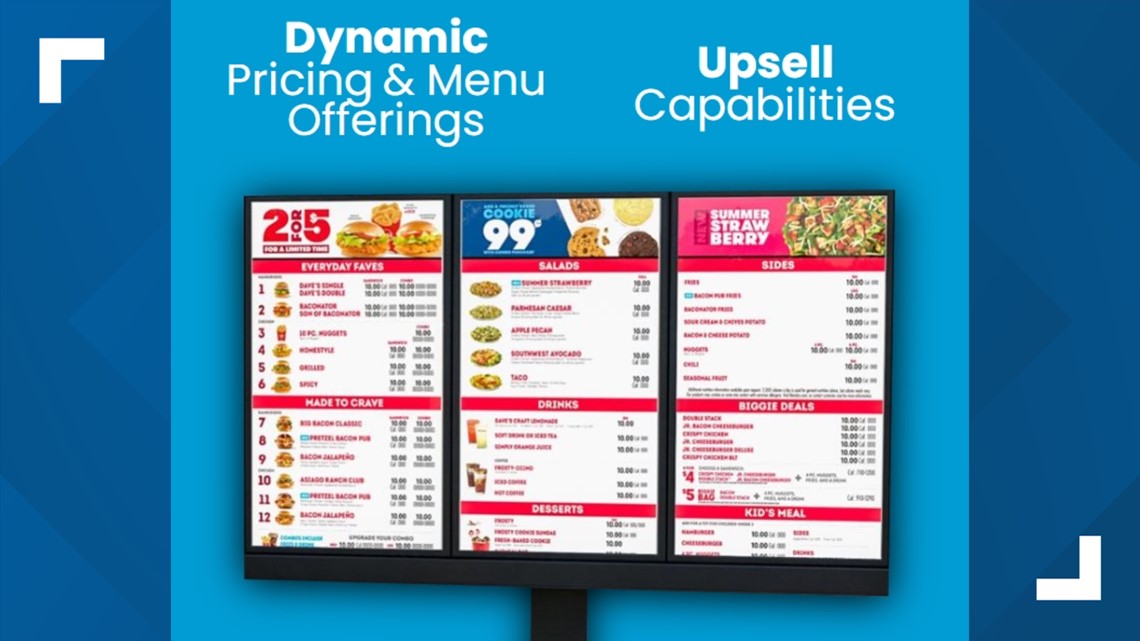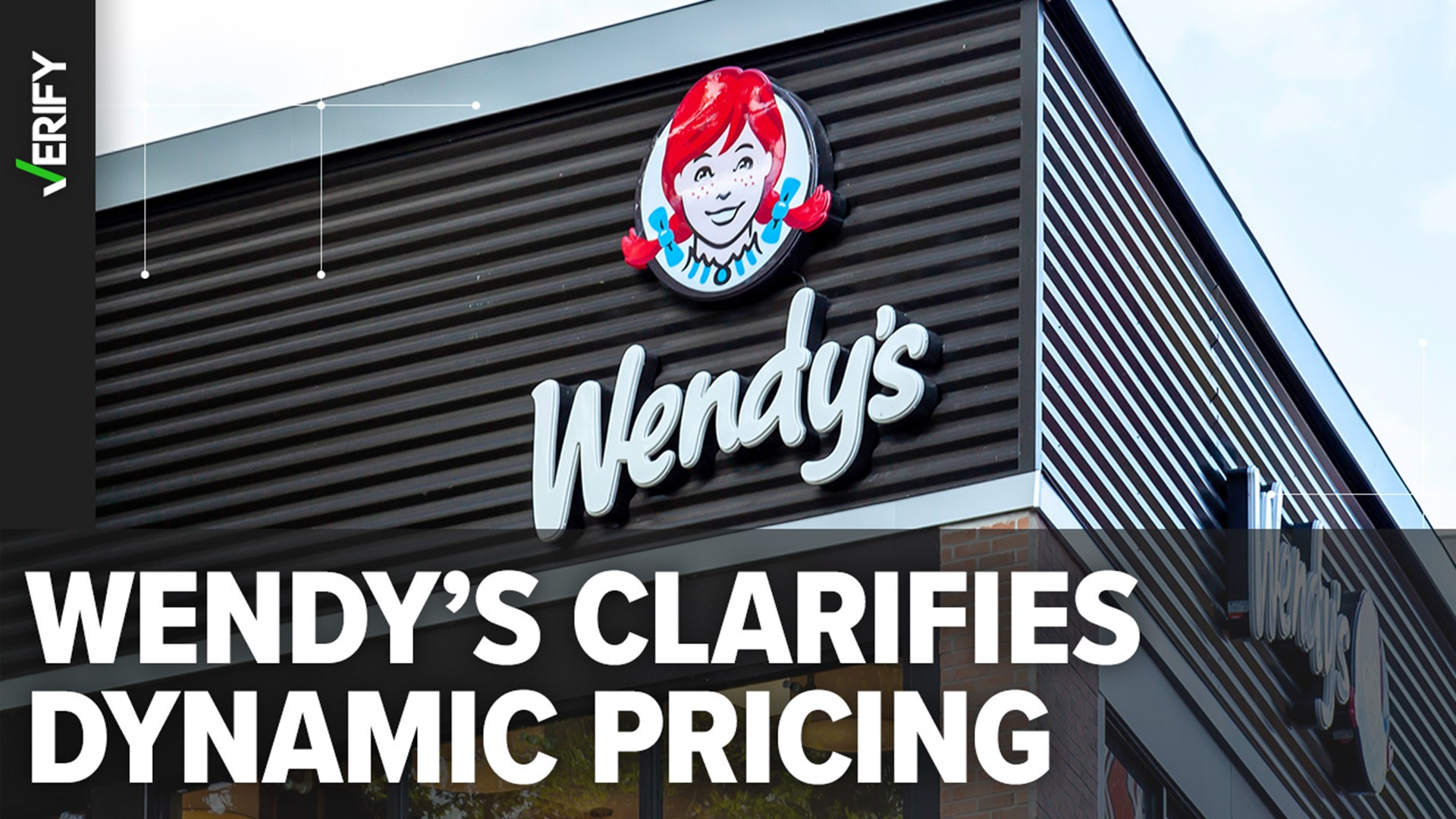WASHINGTON — After making national headlines this week over its plans for "dynamic pricing," Wendy's is working to clarify that it doesn't intend to raise prices during peak times after all and won't implement surge pricing.
In an investor call on Feb. 15, Kirk Tanner, the president and CEO of the fast food chain, announced they would be testing a fluctuating price model in the future, which he called "dynamic pricing," as a way to change prices and menu offerings on the fly at various restaurants.
When asked Tuesday morning about the "dynamic pricing" plans, Wendy's confirmed it would test dynamic pricing as early as next year, saying it would bring additional "flexibility to change the menu more easily and to offer discounts and value offers to our customers."
"As early as 2025, we plan to test a number of features such as AI-enabled menu changes and suggestive selling based on factors such as weather that we think will provide great value and an improved customer and crew experience," Wendy's said in its initial statement.
Throughout Monday and Tuesday, multiple media reports likened the plans to surge charges on ride-hailing apps such as Uber and Lyft, where customers are charged more during times when demand is high.
The phrase "dynamic pricing" is widely known as "the quick rise or drop in prices based on demand," according to the Associated Press. "At places that use this pricing strategy, it may cost more to go on a Saturday, when everyone else is buying tickets."
Hours after releasing the initial statement, Wendy's clarified late Tuesday night that the dynamic pricing test would not be used to raise prices, and would instead be used exclusively to offer discounts.
"Wendy’s will not implement surge pricing, which is the practice of raising prices when demand is highest," a spokesperson for the fast food chain wrote. "We didn't use that phrase, nor do we plan to implement that practice."
The company said their initial announcement during the investor call was misinterpreted.
"This was misconstrued in some media reports as an intent to raise prices when demand is highest at our restaurants," the statement reads. "We have no plans to do that and would not raise prices when our customers are visiting us most. Any features we may test in the future would be designed to benefit our customers and restaurant crew members."
The company said it plans to use digital menu boards to offer discounts and special offers to customers during slower times of the day, when fewer customers are in their restaurants.
"Digital menu boards could allow us to change the menu offerings at different times of day and offer discounts and value offers to our customers more easily, particularly in the slower times of day," Wendy's said in its follow-up statement.
Although the company's Q4 earnings report was shared earlier in the month, reporting about the dynamic pricing plans only began picking up traction this week.


By Tuesday, the fast food chain was trending on social media platforms over the news. On X, formerly Twitter, more than 860,000 posts about Wendy's were circulating, with users largely annoyed by how the perceived change could impact fast food prices.
In the initial call with investors on Feb. 15, Tanner said the company would spend around $20 million over the next two years to establish digital menu boards that will allow restaurants to change prices on the fly.
Tanner also revealed that Wendy's was using its own internal AI model - named "Frosty" - in several restaurants. While he didn't specify what exactly the AI was doing, he told investors that the company was seeing "ongoing improvement in speed and accuracy" at those locations.

